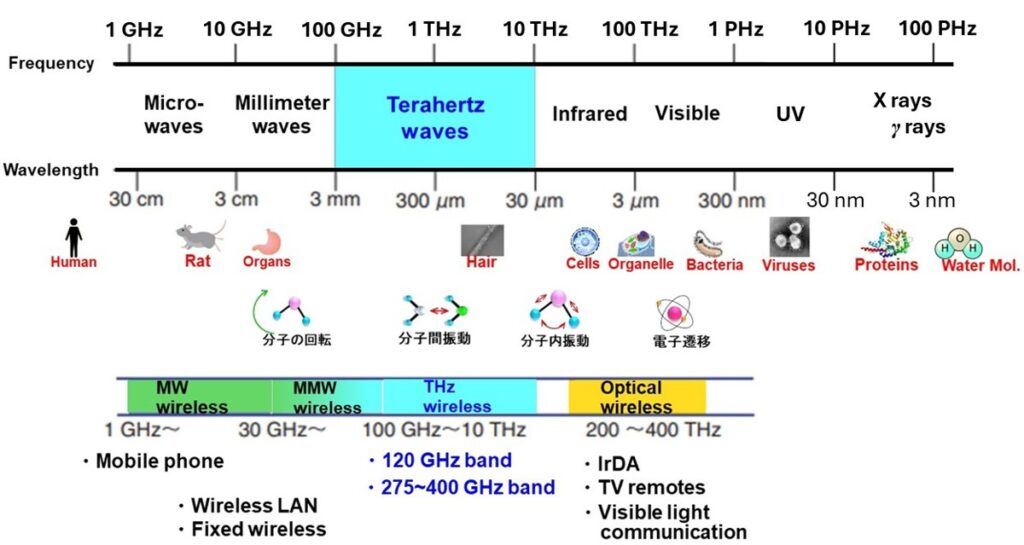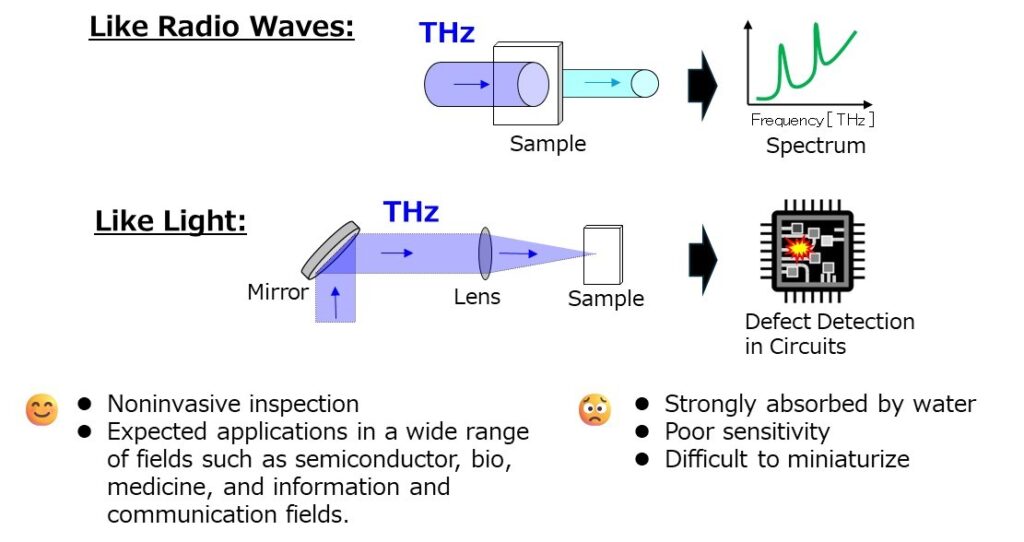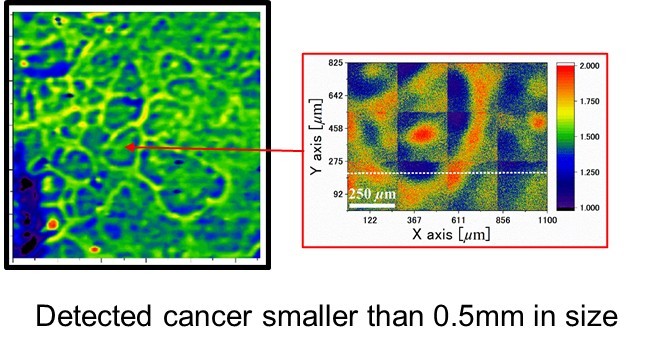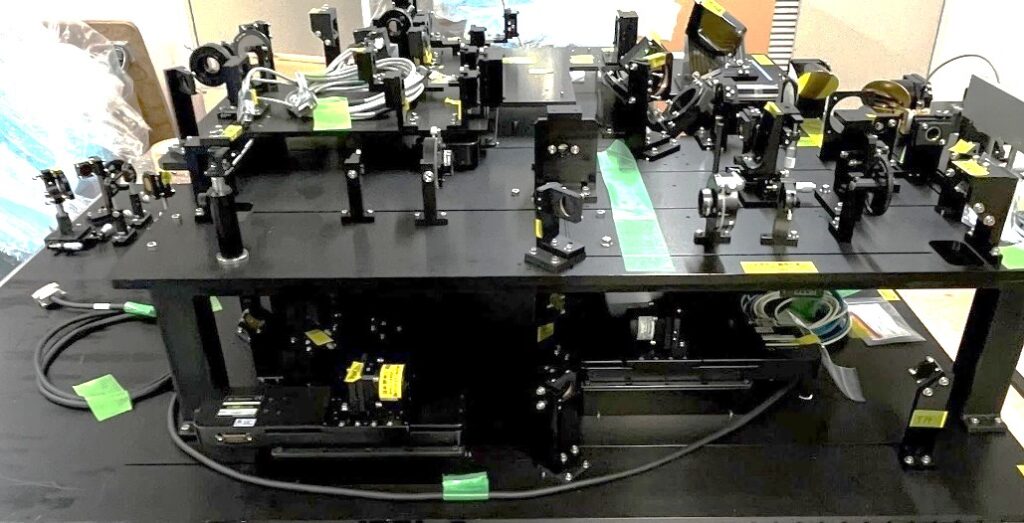Terahertz waves are electromagnetic waves with frequencies ranging from about 100 GHz to 10 THz, corresponding to wavelengths between about 30 μm and 3 mm. These waves occupy the intermediate region between radio waves and light.

Terahertz waves can penetrate various materials like radio waves, and we can obtain spectral information about the materials. Additionally, like light, they can be reflected and focused using mirrors and lenses, so we can image various materials, too. For example, THz waves can be used to detect defects within semiconductors or identify broken circuits. These capabilities can be utilized non-invasively, so terahertz technology is expected to be applied in various fields.

However, terahertz waves are strongly absorbed by water, resulting in poor sensitivity, which hinders the widespread adoption of practical systems and sensors.
At the Serita laboratory, we focus on research utilizing “Point Terahertz Sources” generated through a wavelength conversion process from light to terahertz waves. Our ultimate goal is to create a society where terahertz technology is more accessible and integrated into everyday life.
- Point Terahertz Sources

We are developing a highly localized and dense terahertz sources, called “point terahertz sources” by wavelength conversion in femtosecond pulse laser. This enables the creation of terahertz sources that are extremely small on the order of micrometers.
2. Terahertz Bio-applications


In the terahertz frequency range, unique molecular dynamics such as molecular rotation and intermolecular vibration can be observed, which are not detectable with other electromagnetic waves. These dynamics are believed to play a crucial role in various biological functions, highlighting the importance of developing high-performance systems and sensors.
In this laboratory, we use a new type of terahertz microscope capable of examining small substances such as cells and molecules, as well as biochemical sensors that can detect minute amounts of solution with high sensitivity, to obtain molecular information in the terahertz range.
3. Semiconductor Evaluation

We are conducting research on the application of terahertz technology to non-destructive inspection and characterization of defects in semiconductor materials, semiconductor devices, and LSIs. As the semiconductor industry is a hot topic in Kyushu, we are promoting the development of terahertz technology to support its growth.
4. Terahertz Integrated Systems
In preparation
